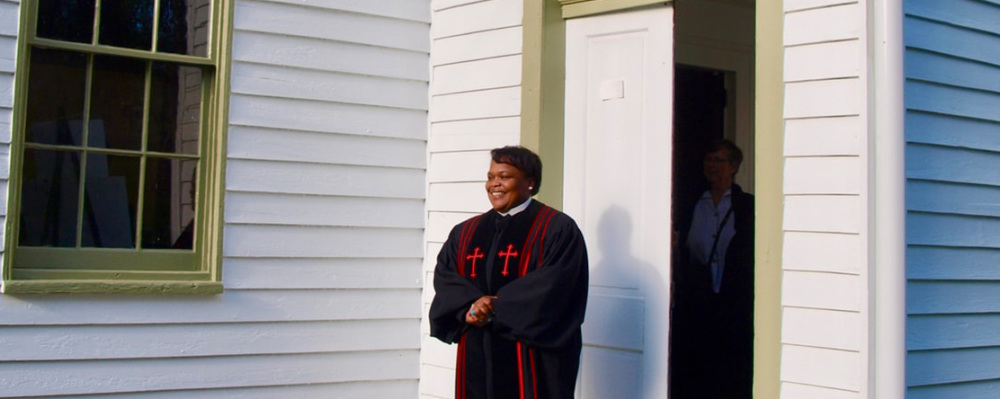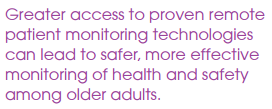
Position Paper: Technologies for Remote Patient Monitoring for Older Adults
-
Focus Areas
Capacity Building & Leadership, Chronic Disease Prevention, Data, Technology & Innovation, Disability Rights -
Issues
Technology & Telehealth -
Programs
Center for Technology and Aging

 A majority of older adults are challenged by chronic and acute illnesses and/or injuries. Eight out of ten older Americans are living with the health challenges of one or more chronic diseases. In addition, falls are the most common cause of nonfatal injuries and of hospital admissions for trauma among older adults.
A majority of older adults are challenged by chronic and acute illnesses and/or injuries. Eight out of ten older Americans are living with the health challenges of one or more chronic diseases. In addition, falls are the most common cause of nonfatal injuries and of hospital admissions for trauma among older adults.
Remote patient monitoring (RPM) technologies have been shown to be effective in helping to manage chronic disease, postacute care, and monitoring the safety of the older adult population. RPM technologies can help older adults slow the progression of chronic disease and ensure continued recovery after being discharged from an acute care setting. RPM technologies also can alert caregivers and prompt intervention when a vulnerable older adult is injured or in harm’s way.
A number of RPM technology-enabled innovations can improve the health and independence of older adults. This paper discusses two areas of opportunity for remote patient monitoring in this population:
- Chronic disease management and post-acute care management
- Patient safety
In alignment with the mission of PHI's Center for Technology and Aging, this paper will focus on technologyenabled innovations aimed predominantly at improving the health of older adults and promoting independent living in communitybased, home, and long-term care settings. Such technologies are used by patients and caregivers principally to improve self-management of care and enhance communication of patient information to clinicians. The technologies described in this report should be viewed as a limited sample and not an exhaustive list.
The U.S. health care system could reduce its costs by nearly $200 billion during the next 25 years if remote monitoring tools were used routinely in cases of congestive heart failure, diabetes, chronic obstructive pulmonary disease, and chronic wounds or skin ulcers. While chronic disease, post-acute care and injuries are not limited to this population, older adults are disproportionately affected by such problems.
Greater access to proven RPM technologies can lead to safer, more effective monitoring of health and safety among older adults. While RPM solutions that reduce the cost and burden of illness among older adults currently exist, most are still widely underutilized and represent an untapped resource for reducing costs and increasing quality of life. This paper discusses the benefits of broader diffusion of proven RPM technologies for older adults with chronic health conditions, their family caregivers, the long-term care workforce, and society at large.
Work With Us
You change the world. We do the rest. Explore fiscal sponsorship at PHI.
Support Us
Together, we can accelerate our response to public health’s most critical issues.
Find Employment
Begin your career at the Public Health Institute.


